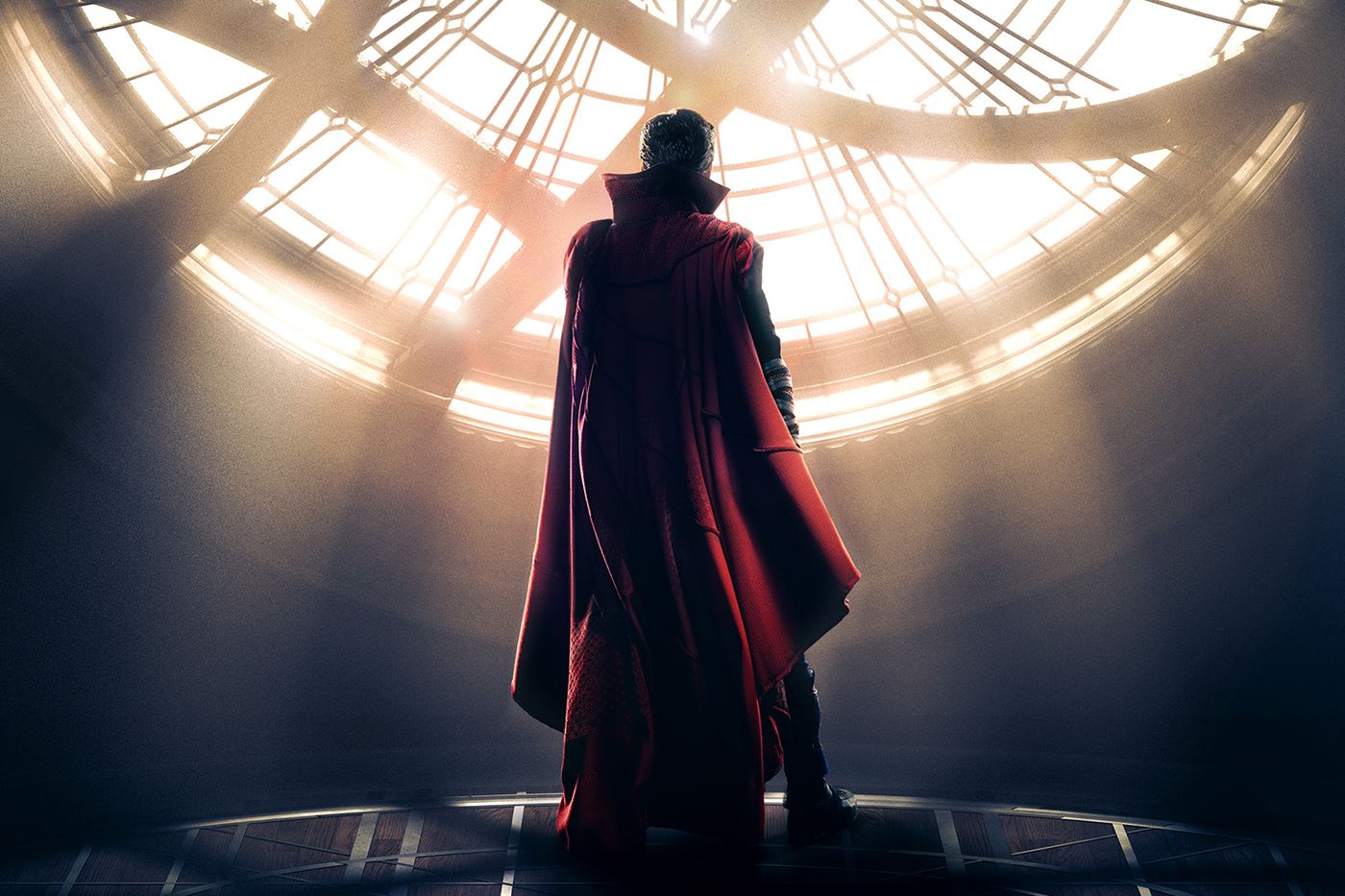Table of Contents Show
The Marvel Cinematic Universe (MCU) has a dangerous problem with the depiction of Asian people in their movies and television shows, all of which culminated in the release of Scott Derrickson’s film Doctor Strange (2016). The film depicts an Orientalist view of Asian religions, cultures, and aesthetics. The titular character Doctor Stephen Strange travels to Kathmandu, Nepal, hoping for a career-saving cure after becoming disabled. The film’s disability narrative and Nepalese setting are inseparable from each other because it is only when Strange becomes disabled that he is forced to reckon with his Orientalist prejudices about Eastern medicine and mysticism. The blurring together of Asian religions and aesthetics, the depiction of the East as irrational/mystical in comparison to the rational/scientific West, and the mishandling of pre-existing race problems from the Doctor Strange comics intersect in Derrickson’s film to create a narrative that perpetuates Orientalism rather than subverts it.
The Opening Criticism Of Doctor Strange
Doctor Strange’s debut into the MCU was met with criticism from the very start. The criticism was directed towards Derrickson’s decision to cast Tilda Swinton, a white British woman, as the Ancient One, Strange’s teacher in the mystic arts. This character has historically been written in the comics as Asian. The Media Action Network for Asian Americans called the casting choice whitewashing since Derrickson consciously decided to erase the Ancient One’s Asianness, believing that the already-existing racist implications of the Ancient One from the comics could be “fixed” by rewriting the character to be Celtic. (( Yee, Lawrence. “Asian Actors in Comic Book Films Respond to ‘Doctor Strange’ Whitewashing Controversy,” Variety, November 4, 2016. )). The implication behind this choice is that race and gender are mutually exclusive identities and that the same stereotypes affecting racial minorities also affect (white) women.
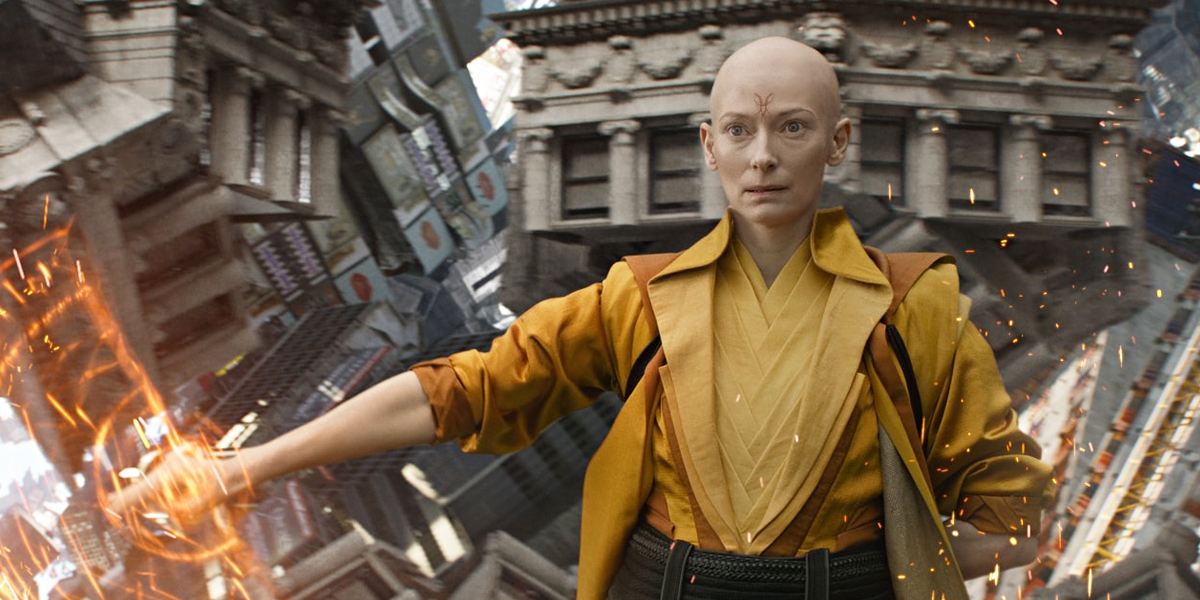
However, Derrickson’s concerns about the racist stereotypes written into the foundation of the Ancient One’s character — the very same ones that led him towards whitewashing the character in the first place–bring to light the race issues at the core of the Doctor Strange comics from the 1960s: they were deeply prejudiced and riddled with ignorant, stereotypical depictions of Asian people and the Far East. He said in an interview with the Daily Beast: “It was a challenge from the beginning that I knew I was facing with both Wong and the Ancient One being pretty bad racial stereotypes—1960s versions of what Western white people thought Asians were like. We weren’t going to have the Ancient One as the Fu Manchu magical Asian on the hill being the mentor to the white hero. I knew that we had a long way to go to get away from that stereotype and cliché.” (( Yamato, Jen. ”Doctor Strange’ Director Owns Up to Whitewashing Controversy.” The Daily Beast, July 12, 2017. )). Derrickson’s film fares better with its depiction of Wong, but the Ancient One falls short. Without saying the word, Derrickson describes Orientalism and argues that the Ancient One’s character in the comics specifically is a victim of Orientalism.
Edward Said writes that the Western film industry reinforces “the stereotypes by which the Orient is viewed […] into more and more standardized molds[.]” (( Edward W. Said, Orientalism (London: Penguin Books, 2019), 26. )) Doctor Strange grossed $677 million worldwide, was an integral part of the MCU timeline, and starred Benedict Cumberbatch, an extremely popular actor. The film had a global pull and is still regarded as a fan favorite five years later. Derrickson’s Doctor Strange is rife with Orientalist themes despite his best efforts to avoid the very cultural stereotypes about East Asian people Orientalism created decades prior. To ignore them would be ignorant. Doctor Strange’s plot is driven by the titular character’s assumptions about the East, non-Western religious and cultural practices, and medicine/healing. The film needs both Strange to have these Orientalist beliefs and for the audience to have them as well, in order to communicate to the audience that the East is a magical, “mystical” alternative to the rational, scientific West. For the plot of Doctor Strange to “work,” so to speak, it must use Western stereotypes about the East as shrouded in magic and mystery to set up a journey of physical healing, learning, and self-discovery for Strange.
Defining Orientalism In Doctor Strange
This article uses Edward Said’s Orientalism as a lens with which to analyze Doctor Strange. Said does not provide an explicit definition for Orientalism but does provide many instances of Orientalist practices and explains how the concept of Orientalism is related to a hegemonic binary system of East vs. West. The Orient and the East are catchall terms for the nations and cultures that exist in the Middle East and Asia. The setting for Doctor Strange is Kathmandu, Nepal, but the film is not working with any explicitly Nepalese religious or cultural practices. It employs generalizations about Eastern religions, cultures, and aesthetics instead of adhering to those of Nepal, revealing Derrickson’s Orientalist understanding of Asia at large.
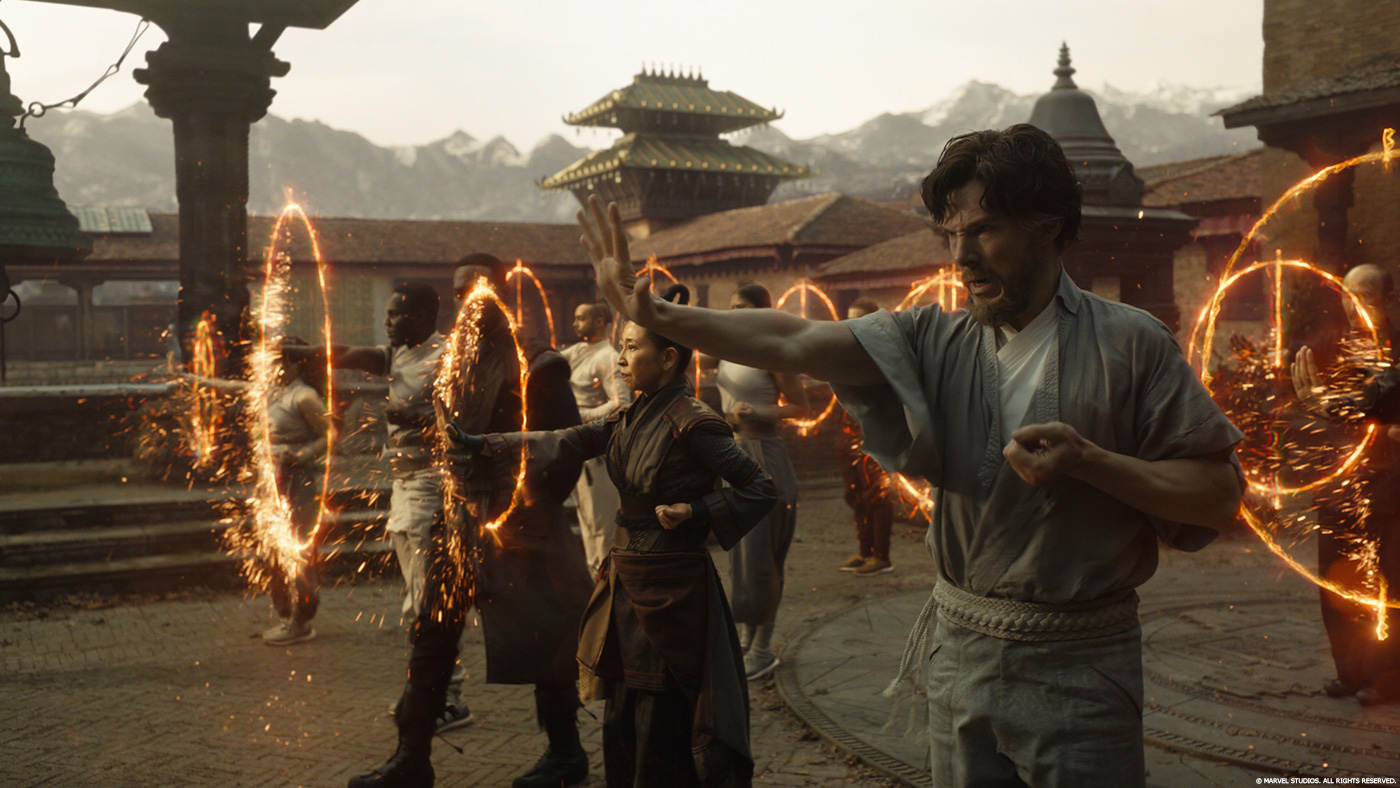
The geopolitical regions of the East and West operate on a binary. Said writes: “The Orient was almost a European invention, and had been since antiquity a place of romance, exotic beings, haunting memories and landscapes, remarkable experiences.” (( Edward W. Said, Orientalism, 1. )). This is what makes the plot of Doctor Strange so enchanting and captivating to audiences: it takes the titular character out of his Western, American comfort zone. It transplants him into the mystical East, where he must accept the mysticism of Eastern knowledge to attain a higher state of being. The culture and the religion are unfamiliar to both him and the audience, creating drama and intrigue in the story.
The fact that a former adherent of Western medicine, science, and rationality becomes a practitioner of magic and spells in an Eastern setting is in itself one of the aforementioned “remarkable experiences.” Furthermore, the West is Europe and America, something that Said makes quite clear in Orientalism. This is because, he claims, only Europeans and Americans actively study Orientalism. (( Ibid., 11 )). Orientalism operates on a strictly binary model, with the West/Occident on one side and the East/Orient on the other. However, in this binary, the West takes a hegemonic role and “creates” an Orient in order to justify their intellectual, cultural, and racial superiority over non-European individuals.
Orientalism At Kamar-Taj
Said writes that Orientalism is a feeling that Westerners assign their “coming to terms with the Orient” (( Ibid., 1 )). As aforementioned, this binary favors Western hegemony because the West dictates the differences between East and West. When the West comes into contact with the East, assumptions about their ways of life, including government, religion, culture, and ideologies, are formed within the context of the Westerners’ own experiences. This connects further with Said’s analysis that Orientalism is a Western practice “for dominating, restructuring, and having authority over the Orient.” (( Ibid., 3 )) This kind of domination and structuring of what the Orient’s landscape, cultures, peoples, religions, and governments look like takes precedence over the lived experiences of Eastern people. In Doctor Strange, we see Nepal and Kamar-Taj, and the religion practiced there, through Strange’s eyes: the eyes of the West. Strange’s assumptions about the East as unscientific and irrational are confronted when he meets Master Baron Mordo, his peer mentor at Kamar-Taj, and the Ancient One, and subsequently learns the way of the mystic arts.
Kamar-Taj is a mishmash of several different Asian architectural styles; Alison Willmore writes that the interior of the temple has “latticework panels that line the walls [that] look like chinoiserie, while the courtyard seems modeled after a Buddhist temple.” (( Willmore, Alison. “The Incredible Visuals And Unfortunate Orientalism Of ‘Doctor Strange.’” BuzzFeed. BuzzFeed, April 1, 2021. )). The Ancient One wears saffron yellow robes, an aesthetic that aligns her with Buddhist monks, but the students at the temple are dressed in layered white or red robes and trousers (with Nike shoes of all things) that are meant to look vaguely Asian. The blending of different Asian religions’ religious dress to create a unified “Asian aesthetic” in Doctor Strange shows Westerners an Asia they are familiar with, which indicates that the film could take place anywhere in the East and still be the same story.
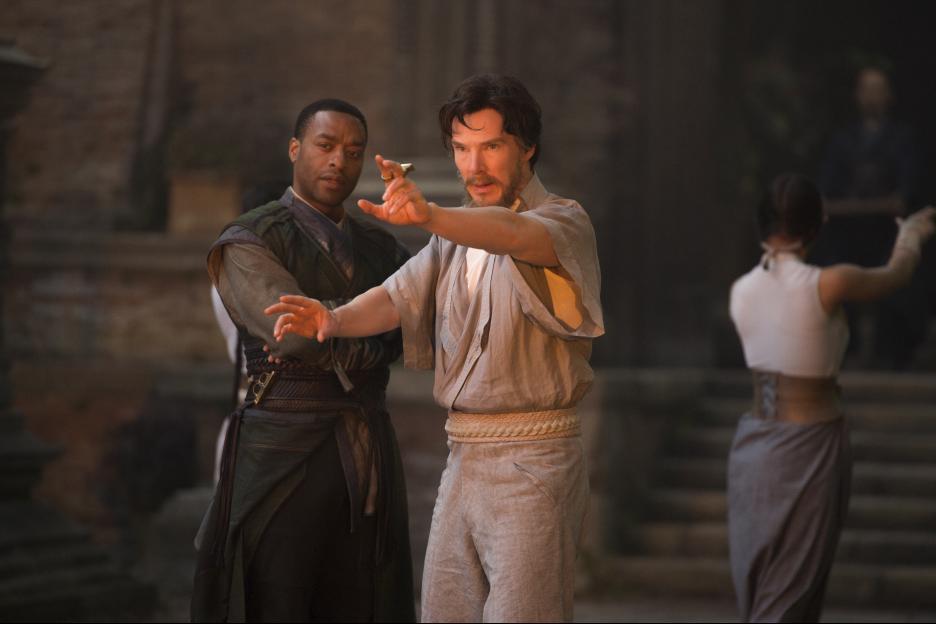
Finally, Said writes that through the practice and study of Orientalism, the Western world trivializes the East into “aesthetic, scholarly, […] and philological texts” and when Westerners study the East, it “is, rather than expresses, a certain will or intention to understand, in some cases to control, manipulate, even to incorporate, what is a manifestly different (or alternative and novel) world.” (( Ibid.,12 )). This is seen rather clearly in Strange’s own journey at Kamar-Taj, where he learns the mystic arts and rises quickly in order to become a Master and finally the Sorcerer Supreme. He hails from the West and is a practitioner of Western medicine, which puts him in direct opposition to the East and the Ancient One’s practice of Eastern mysticism. When Strange arrives at Kamar-Taj, he mocks the Ancient One’s beliefs about the spirit and healing through the spirit. Strange falls under the “control” and “incorporate” categories since he reads the texts on the mystic arts voraciously in the hopes to learn all of the spells and secrets of Kamar-Taj in order to heal his hands and return to his pre-disability lifestyle. He does not actually care about the religion or practices of the mystic arts but rather uses them as a personal and selfish means to an end. This actually leads to his inability to cast spells or open portals because his heart is not fully committed: he still sees the mystic arts as irrational.
Subsequently, the audience’s views of the East as a place of spirituality frame our perception of Doctor Strange. The rise of yoga and meditation as spiritually “alternative” and healing is framed in opposition to the West. It is turned to and “incorporated” as an escape from Western frameworks of personal success, health, and spirituality. The audience’s Orientalist assumptions about Eastern religions as being “alternative” to Western healing, and used as a “last resort” when Western medicine and philosophy fail, is seen plainly in Doctor Strange. With this mindset, the East is only valued for the spiritual escape and alternativity it offers the West. The Eastern mysticism and spirituality that the West trivializes in favor of rationality and science are turned to as a last resort, only after the Westerner has lost their faith in the ways of the West. This creates a narrative where the Westerner must confront their Orientalist views and accept the East or reject it.
Orientalist Displays In Doctor Strange
Doctor Strange is littered with Orientalist one-liners and aesthetics. They’re found everywhere, from the belted and layered tunics to Christine telling Strange “[y]ou joined a cult,” to Strange’s shock that Kamar-Taj does not look “Kamar-Taj-y” in comparison to the other temples he sees in Nepal. (( Derrickson, Scott, dir. Doctor Strange. 2016. )). The most shocking and damning one-liner was when Mordo gave Strange the Wifi password for the temple. Strange asks if this is his daily mantra, to which Mordo responds that it’s the Wifi password because they “aren’t savages,” making a tongue-in-cheek joke about Strange’s unspoken thoughts that a temple is concerned with mysticism and magic would not have any technology.
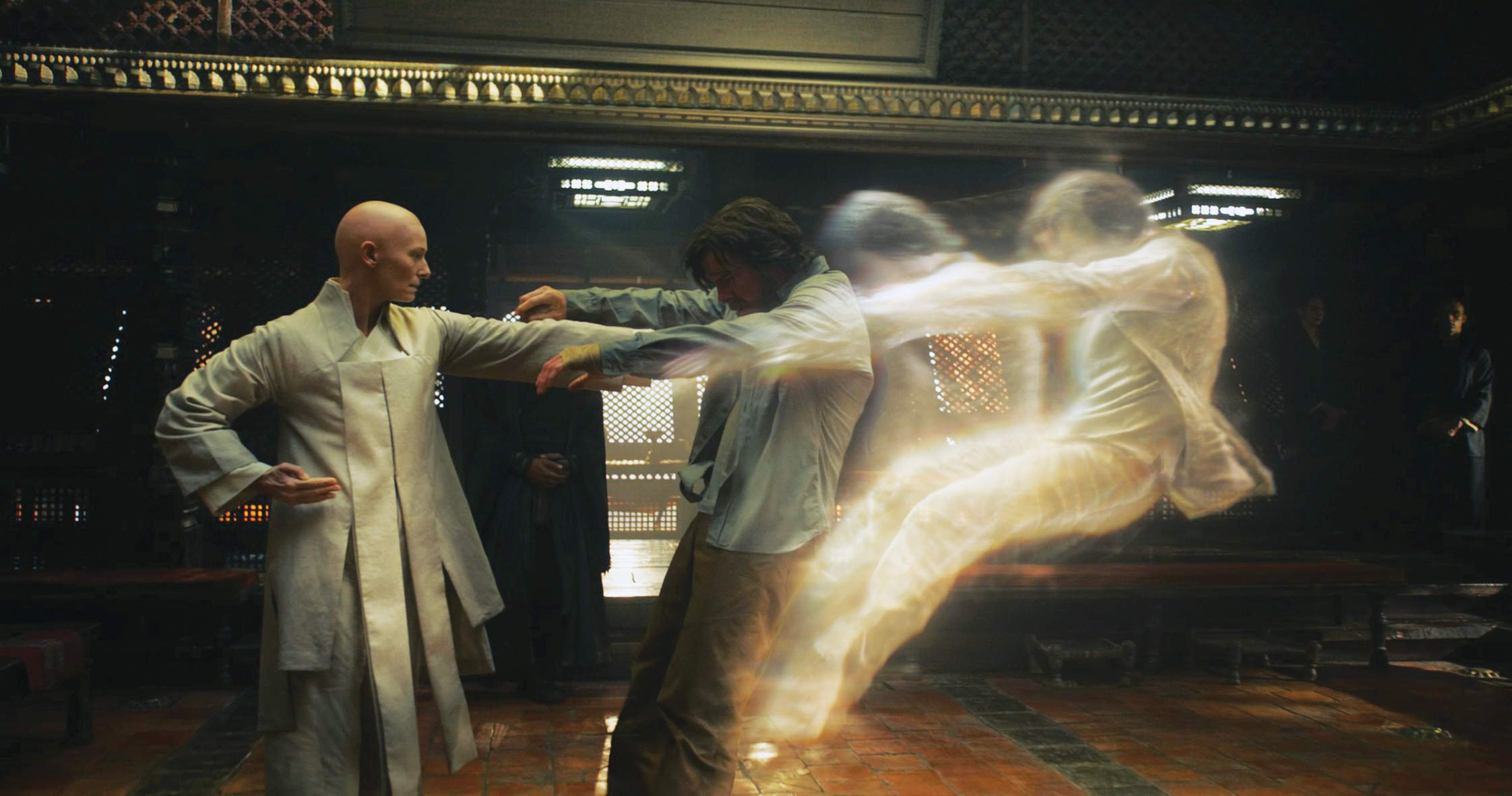
This connects to the Western assumption that civilization and respectability are based on having technological access, hence why Mordo says they “aren’t savages” preemptively. He confronts Strange’s assumption that the East has no technological access and that the East is full of “savages” with no connection to the global society. Essentially, the Orientalist stereotypes about the East’s culture, religion, and society are meant to be comedic and amuse a Western audience. These same jokes would likely not land in an intended way with a non-Western audience. The next section of this article will close-read a scene from Doctor Strange. Strange’s arrival at Kamar-Taj, where he first meets the Ancient One, forces him to confront his Orientalist perspectives about medicine, religion, and philosophy. This scene is a prime example of how Doctor Strange is a film predicated on, and dictated by, Orientalism.
Strange’s Arrival At Kamar-Taj
Firstly, when he enters, Strange confuses Master Hamir, an Asian man, for the Ancient One. Master Hamir, dressed in a layered grey robe and tunic with a long, grey beard, looks like the stereotypical “Fu Manchu magical Asian on the hill” that Derrickson wanted to avoid depicting the Ancient One as. Strange is shocked to find that a white woman is the Ancient One. The Ancient One’s introduction of herself disrupts Strange’s Orientalist view of what an Eastern mystic might look like. When she begins to tell him about how she can help Strange heal his disability, he asks her if the reason why she’s operating out of Nepal is that she can work on experimental, alternative, non-Western medicine-approved treatments “without a governing medical board.” (( Derrickson, Scott, dir. Doctor Strange. 2016. )). This line, like the aforementioned one about the Wifi, speaks volumes about how the West views the East in terms of government regulations and medicine. Since the Ancient One is a white woman, he assumes that her radical forms of therapy aren’t accepted by the Western governing medical boards, and she is in the East because they are more relaxed when it comes to medical and surgical procedures.
This is Orientalism at work. Strange’s experience as a neurosurgeon in the West frames his perception of alternative medicine and how the East engages in different medicinal practices. He is used to the strict rules of what is and is not ethical, what procedures are acceptable; he assumes in this scene that the East allows procedures that would never be permissible in the West. His mind is bound by Orientalism as he attempts to understand how the Ancient One could possibly heal him since he is only thinking with a rationalist mindset; he does not even consider that magic and the mystic arts could heal him because he believes that only doctors (like himself) have the ability to cure the sick and disabled. Strange further chafes with the Ancient One when she begins to show him a book with pictures of chakras, acupuncture charts, and MRI scans. The Ancient One presents these three models all as equally valid forms of looking at how the body works, which offends Strange’s Western sensibilities.
His Western training in medicine and science has taught him to dismiss chakras and acupuncture since they are Eastern (Indian and Chinese, respectively) and therefore irrational, not empirically-based. He becomes distraught when the MRI scan is shown to him because he does not believe the chakras and the acupuncture charts to be as valid as the MRI scan. Strange begins to spout that chakras and spirits are mere “fairytales” to him and that there is “no such thing as spirit” to the Ancient One. Strange trivializes the mystical Eastern perspectives on the mind, body, and spirit because they cannot be proved and are inferior to the rationalism and empiricism of the West. His Orientalist attitudes come to the forefront, and even though he wants to be healed, he is frustrated that his healing journey does not fit his schema of healing and medicine. Strange’s Orientalism and trivialization of Eastern modes of thought and religion prevent him from accepting the help of the Ancient One.
The Disability Narrative Of Doctor Strange
An overlooked aspect of Doctor Strange is its disability narrative, even though it connects directly to the Orientalist themes of the film. The plot is driven by Strange’s car crash, where he broke nearly all the bones in his hands and lost control over the nerves in his fingers. This is especially detrimental to him because he requires the unfettered use of his hands as a neurosurgeon. The car crash disrupts Strange’s able-bodiedness and puts him into a disabled state. After the crash, and even after the operations that will supposedly “heal” him, Strange is left with deep, raised scar tissue on the backs of his hands. His hands are shown shaking throughout the film as well, something he often complains about since the shaking makes it impossible for him to do even basic tasks like shave or sign his name.

The disability narrative of Doctor Strange is where the titular character’s biggest anxieties about Eastern mysticism being able to cure him, and subsequently his Orientalism, take center stage. After seven failed operations, Strange only travels to Nepal and Kamar-Taj to fix his hands and return to medicine. As a neurosurgeon and the product of Western teaching about medicine, he doesn’t believe that spirituality could ever cure his hands; he assumes that Kamar-Taj is a treatment facility operating underground because of their experimental procedures, perpetuating the idea that medicine in the East is less regulated. He takes the advice of a man he actually refused to operate on, Jonathan Pangborn. Out of desperation to be healed, Strange spends the last of his money and travels to Kamar-Taj after Pangborn reveals that his lower back injury and paralysis were “cured” there. (( Derrickson, Scott, dir. Doctor Strange. 2016. )).
But what makes this scene Orientalist is that Pangborn romanticizes the East’s possibility for spiritual empowerment and healing. He tells Strange, “I’d given up on my body. I thought my mind’s the only thing I have left, so I might try to enlighten that,” and that he visited shamans, sacred women, and holy men in his quest to find spiritual healing before ending up at Kamar-Taj, where he learned to heal himself. (( Ibid. )). Strange’s disabled status, which intersects with his status as a doctor from a Western country, forces him to confront his Orientalism and his negative attitudes towards Eastern religion and medicine. Strange’s newfound disability leads him towards the East for a better chance at healing. Strange says so himself to Christine, his former flame and coworker, that he “gave up on Western medicine” and went to the East to find healing for his shaking hands. (( Ibid. )).
But it is important to note that Strange is never “healed” of his disability in the traditional sense. His hands still shake up until the last shot of the film while he puts his watch on. The scars and shaking are even present in Avengers: Infinity War (2018) and Avengers: Endgame (2019), a sign that he will always be disabled. The Orientalist views on Eastern medicine and spiritual healing to heal the physical body are at the very forefront of Doctor Strange and govern the plot and character trajectory of the titular character. The film is reoriented from a reparative narrative about disability towards one that accepts disability as a fact of life. Strange learns to live with his disability, and magic is the way he finds access.
Immortalizing Orientalism?
Despite Scott Derrickson’s efforts to fix the numerous Orientalist stereotypes in the Doctor Strange comics, Doctor Strange’s (2016)’s plot and aesthetic are still mired in Orientalism, from Strange’s assumptions about Eastern mysticism to the blurring of different Asian aesthetics. The film actively operates on the assumption that the West is rational and scientific while the East is irrational and mystic. The disability plotline of Doctor Strange is essential to unpacking the Orientalist assumptions the West has about the East because without Strange’s injury and desperation to become a neurosurgeon again, Doctor Strange would have never ventured to Kamar-Taj and taken up the mystic arts as a way to heal himself had he not become disabled. Edward Said writes that film is an effective vehicle for standardizing Orientalism. With the widespread reach that Doctor Strange had in 2016 — and will have with its sequel Doctor Strange in the Multiverse of Madness in 2022 — it is easy to say that Derrickson proved Said’s point correct.
